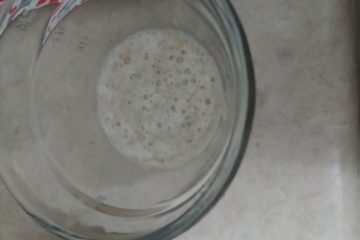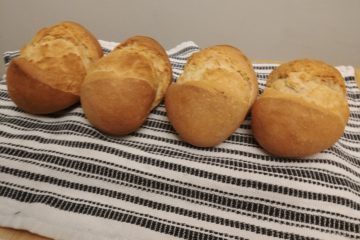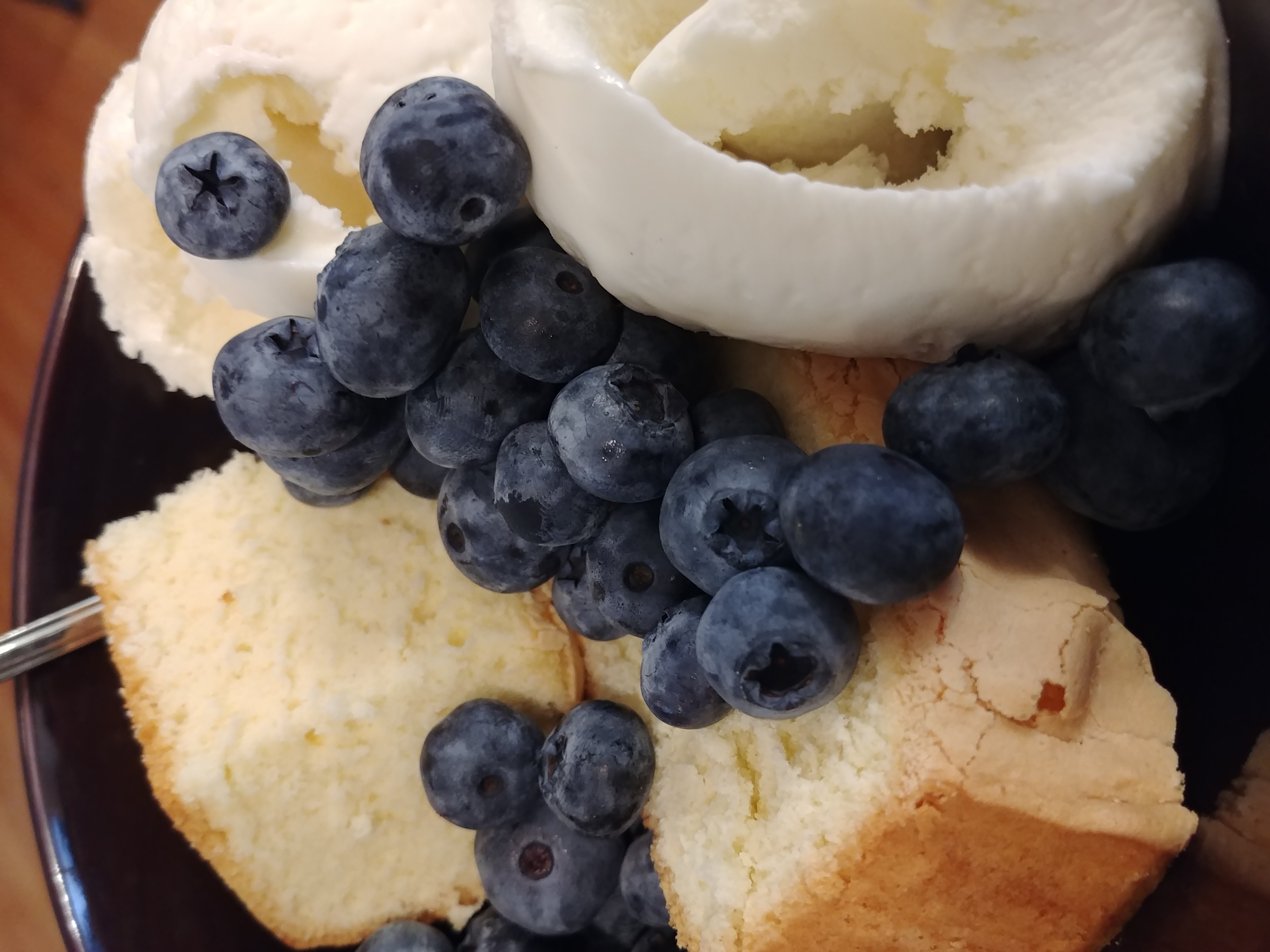21. part 2
Hmmm… I think I should start giving these posts better names. Like Rolof.
Anyway. The next part of my mission is accomplished. I made bread this week that seems to fit the descriptions.
It is thick, and hard to kneed, and has a tight enough crumb that I can easily see the stale version being good for trenchers. It’s also whiteish. Although I haven’t done my flour experiments yet, I imagine that this bread would not be dissimilar in colour to what was eaten in the 16th century.
I kinda winged it this time round. Here is the recipe that I used (created retroactivly):
- 4 cups flour (1 c ww, 3 c white)
- 1 1/2 cups warm water (I ended up adding an extra 1/4 cup of water before kneading)
- 2 1/2 tsp yeast (my yeast is getting to the end of its life, and I should probably get more)
- 2 tsp salt (if kosher, grind in mortar)
- Take 1 1/4 cups warm water and put it in a large bowl, whisk in yeast let sit for 10 minutes
- Slowly add 1 cup whole wheat flour and, stirring, let rest out covered lightly for a half hour
- Once the yeast mixture starts bubbling add 2 tsp salt, stir then add the rest of the flour mix it together (not all of the flour was incorporated)
- Cover and allow to rise 12 hours
- Punch down, dd 1/4 cup water and kneed for 5 minutes, you may need to wet your hands once or twice
- Divide into two loves
- Preheat oven to 170F then turn off oven and put bread in on stoneware
- Let rest for 8 hours
- Set oven to 450 with baking stone and broiling tray in
- Pour 1 cup water into broiling tray
- Bake for 45 min or until crust is browned and firm
Results:
- Shape: A good rising action on this one. It was a bit cold when I was trying to rise it, so I preheated my oven to 170, then turned it off and put the bread in to rise. I think I’ll do that again. Also, I had to add water after the first rise, as the moisture hadn’t seeped through the whole dough. I’ll have to increase the moisture amount in this bread I think. Also, I read in “English Bread and Yeast Cookery” by Elizabeth David that Manchets would have a small cut around the top to create a pleasing secondary crust. I’ll give this a shot next time.
- Crust: Perfect. Hard, slightly crackly. I have the crust down nicely. Great flavour.
- Crumb: I think I have the correct crumb now. It was still close, as a low hydration bread should be, but now it was properly risen, so it worked out a lot better.
- Taste: I think I had the right amount of salt this time. Also smaller crystals helped. This bread has a good filling taste that I really like. The bread isn’t too heavy. I would have liked the bread to have matured a bit more, but the recipe doesn’t actually call for much maturing, so we’ll see how that goes in the future.
Conclusion:
This time was kinda a spur of the moment bread making. I did this to try out a few things. I’ll be doing this again on Friday for the Saturday event. With luck it will work well again.
I worked out the hydration and it was about 64% hydration. I have a feeling that my hydration calculations have been off though, as I’m doing conversions from cups to lb etc, and that’s not very accurate. I think I’m going to go with this recipe and do it by feel instead of by science. It’s more fun that way. I found that the hydration was a good way to work out the recipe at first, but now it just gets in the way.





You must be logged in to post a comment.